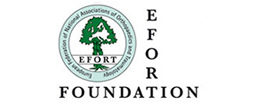Recently, the media, followed by national medical authorities, have raised concerns about problems related to the use of large-head, metal-on-metal, stemmed total hip arthroplasties. At the onset one implant manufacturer with one implant (The ASR hip) was singled out. The reason was the recall action initiated by this manufacturer and the announced multibillion dollar provision in preparation of pending lawsuits. It is now recognized that all stemmed implants with large-head metal-on-metal bearings are in fact concerned. Following, other major manufacturers such as Zimmer and Smith & Nephew have also stopped the commercialization of these types of implants. Due to this state of events the Executive Board of EFORT issues the present statement and encourages surgeons to provide follow-up to all patients with a large-head metal-on-metal stemmed total hip arthroplasty.
Large-head metal-on-metal bearings were introduced globally to potentially avoid the recognized problems associated with conventional bearings. Early complications such as dislocation and late complications such as joint stiffness, excessive wear and osteolysis, have been on-going issues for decades in spite of innovations in joint replacement. Large-head metal-on-metal stemmed hips were logically introduced to solve or reduce these untoward effects. Moreover, early on, large-head metal-on-metal bearings showed promising results with earlier and faster rehabilitation, improved propioceptivity and range-of-motion. Active patients, and many of those surfing on the internet, felt these newer implants would be more adapted to their lifestyle. The large-head metal-on-metal stemmed arthroplasties increased significantly in the overall market of total hip arthroplasties and mainly in the younger patients.
Reports from several single-site studies and now also from national hip arthroplasty registries clearly show a higher than “average” revision rate of large-head metal-on-metal stemmed implants due early painful loosening, particle generation and periprosthetic tissular damage. The EFORT Executive Board recommends that the national societies support initiatives for a “Time-out”, avoiding using all types of large-head metal-on-metal stemmed total hip arthroplasties until final proof is made of their safety and innocuity and of their future place in joint replacement.
A European expert conference was convened under the auspices of EFORT to establish evidence-based recommendations for the adequate follow-up of patients with metal-on-metal hip arthroplasties, including indications for serum ion determinations and necessity of 2D /3D imaging. You will find the statement by clicking here. These recommendations cannot be definitive but provide information useful for the practicing orthopaedic surgeon. The reader will find links to other national society statements by BOA (UK), DOS (Denmark), NOV (Netherlands).
The EFORT Executive Board is taking action to approach the EU regulatory bodies for recommendations involving heightened regulations and control applied to the marketing of implants used in humans.
The EFORT Executive Board aims to be a partner in decisions concerning the use and regulation of musculoskeletal implants and devices, by generating much needed European-based data for regulatory authorities, professional associations, scientific societies and individual practicing orthopaedic surgeons.
Related document: Consensus statement “Current Evidence on the Management of Metal-on-Metal Bearings” (PDF document, 7 pages, 256 kb)



